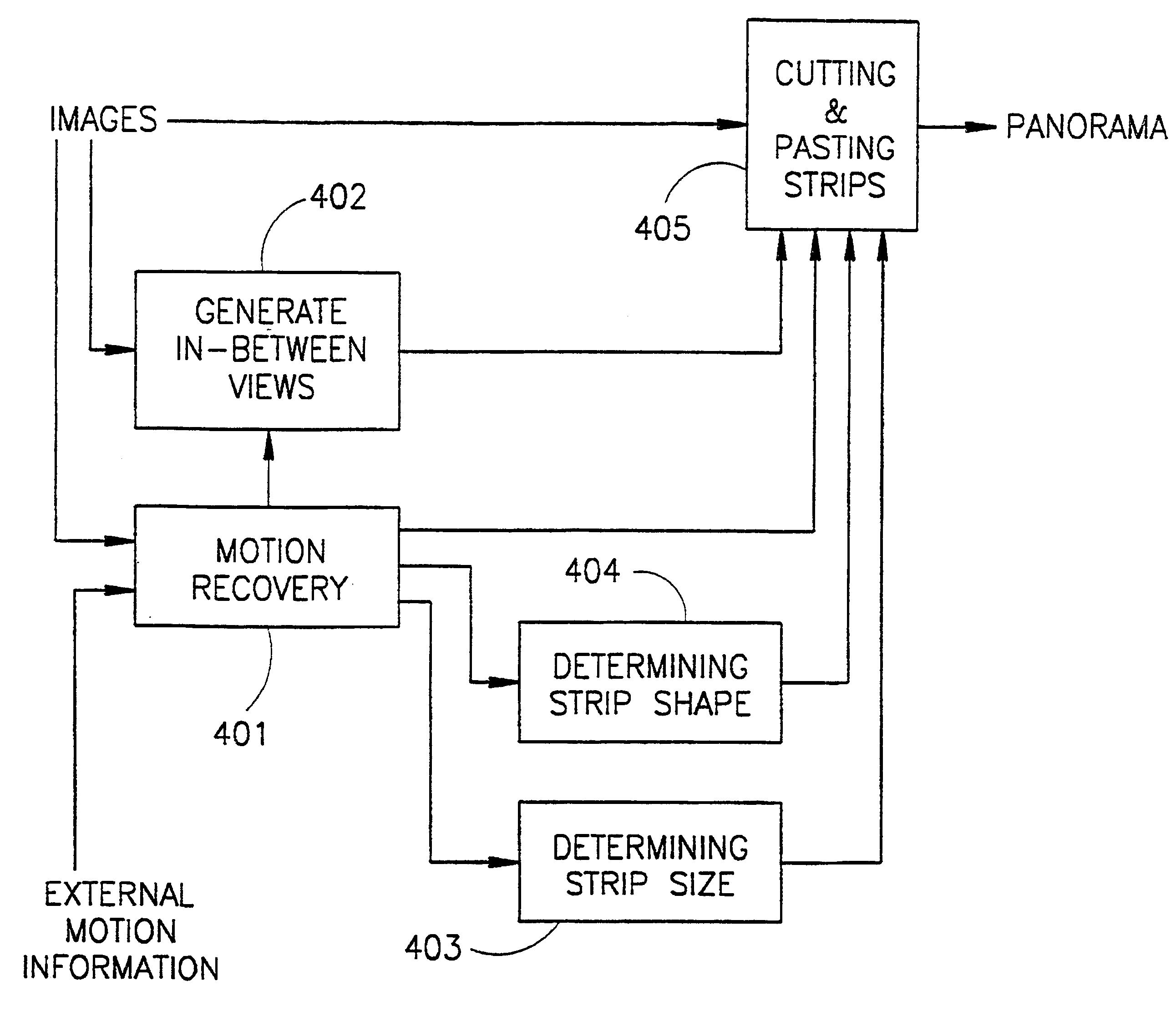Generalized panoramic mosaic
- Summary
- Abstract
- Description
- Claims
- Application Information
AI Technical Summary
Problems solved by technology
Method used
Image
Examples
Embodiment Construction
Mosaicing for Affine Motion
An example of strip shaping for the special case of affine motion will now be described. Affine motion is based on an affine transformation and affords a good approximation for many types of motion. Based on the detailed description given below it will be apparent to a person skilled in the art that other types of motion can be dealt with in a similar manner.
The affine transformation can be expressed as follows: ##EQU1##
where P.sub.n-1 =(x.sub.n-1, y.sub.n-1) and P.sub.n =(x.sub.n, y.sub.n) are the coordinates of corresponding points in images I.sub.n-1 and I.sub.n, and the parameters of the affine transformation A are (a, b, c, d, e, f). (u, v) is the optical flow vector as a function of position (x.sub.n, y.sub.n). The transformation A (and the optical flow) vary continuously along the sequence of images. Numerous methods exist to recover the parameters of an affine transformations [21, 18] and they will not be described here.
In accordance with the metho...
PUM
 Login to View More
Login to View More Abstract
Description
Claims
Application Information
 Login to View More
Login to View More - R&D
- Intellectual Property
- Life Sciences
- Materials
- Tech Scout
- Unparalleled Data Quality
- Higher Quality Content
- 60% Fewer Hallucinations
Browse by: Latest US Patents, China's latest patents, Technical Efficacy Thesaurus, Application Domain, Technology Topic, Popular Technical Reports.
© 2025 PatSnap. All rights reserved.Legal|Privacy policy|Modern Slavery Act Transparency Statement|Sitemap|About US| Contact US: help@patsnap.com



